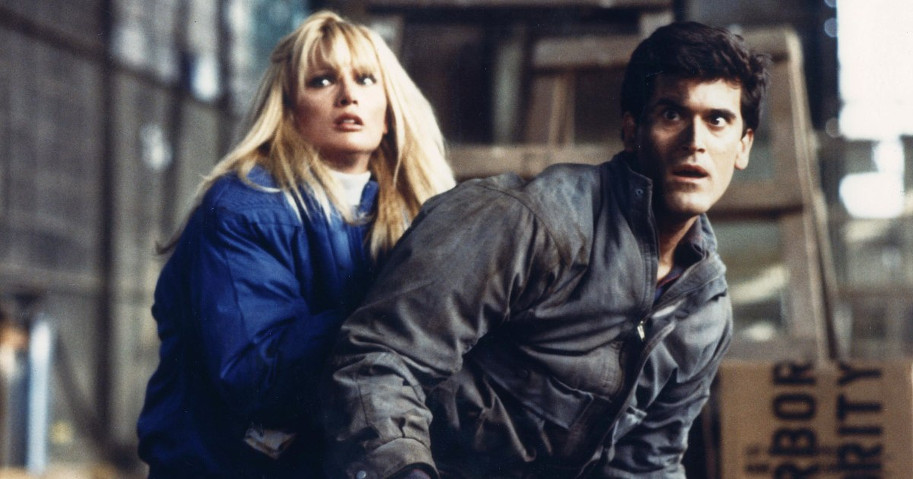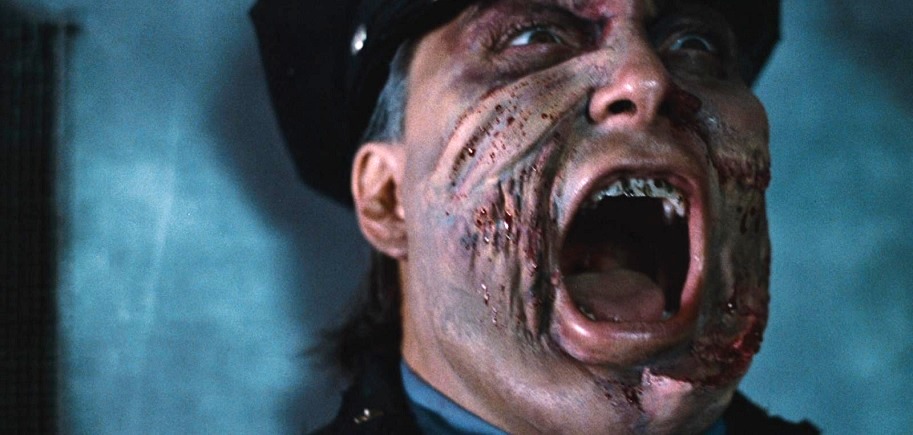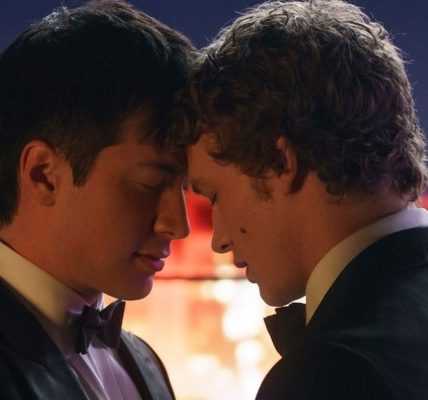In the heart of New York City, a chilling figure masquerades as a police officer, turning the streets into a hunting ground for his brutal crimes. This malevolent killer preys on unsuspecting victims, exploiting the trust that comes with the badge. As he claims lives indiscriminately, the horrifying saga of Maniac Cop unfolds—a film born from the minds of genre legends. In this piece, we delve into the fascinating backstory of this iconic horror film and explore its impact on the genre.
The inception of Maniac Cop traces back to the groundbreaking 1980 slasher film, Maniac, which marked William Lustig’s debut in mainstream feature direction. The film gained notoriety for its shocking violence, largely attributed to the graphic effects by Tom Savini. Following this, Lustig ventured into the action thriller realm with Vigilante in 1982, which, despite its eventual cult status, initially struggled at the box office. After a six-year hiatus filled with unfulfilled projects, Lustig’s fortunes changed when he crossed paths with esteemed filmmaker Larry Cohen.
With nearly three decades of industry experience, Cohen had crafted classics such as the It’s Alive trilogy and The Stuff. During a casual lunch, he proposed the idea of a sequel to Maniac, a concept Lustig dismissed. However, inspired by recent hits like Beverly Hills Cop and RoboCop, Cohen suggested they create a new film titled Maniac Cop. Lustig later recalled in an interview with Fangoria that Cohen envisioned a film akin to Friday the 13th, but centered on a cop, aiming for a narrative that was both intelligent and full of unexpected twists. Lustig initially found the title and tagline, “You’ve got the right to remain silent forever,” amusing, recognizing the unique blend of horror and humor it offered.
In an interesting turn of events, Lustig’s friend, filmmaker James Glickenhaus, who had recently enjoyed financial success, agreed to fund Lustig’s vision. Glickenhaus, who was securing a production deal with Leonard Shapiro, provided a budget of $1.5 million for Maniac Cop, making it the inaugural project for Shapiro-Glickenhaus Entertainment. This collaboration opened the door to a new chapter in Lustig’s career.

Interestingly, Shapiro expressed his discontent with the film’s title upon signing on as producer, insisting on a change. Lustig, however, staunchly defended the title, emphasizing its integral role in representing the film’s essence. Despite Shapiro’s reservations, Lustig’s passion for the title prevailed, ensuring that the film retained its memorable branding. This decision proved beneficial, as the title became a significant draw for audiences.
Fast forward just a month after Cohen’s initial idea, and Lustig was already capturing footage during the St. Patrick’s Day parade in New York City, seeking to enhance the film’s production quality. He enlisted Bruce Campbell and Sam Raimi for cameo appearances, with Campbell portraying the film’s protagonist and Raimi appearing as a news reporter. While the bulk of the film was shot in the summer, this early footage allowed Maniac Cop to be associated with the festive atmosphere of St. Patrick’s Day.
Curiously, despite Lustig’s initial reluctance to work in Los Angeles, much of Maniac Cop was filmed on the West Coast. While key scenes like the parade and opening sequence were shot in New York, budget constraints necessitated the relocation of many shoots to Los Angeles. Lustig candidly explained that the high costs of filming in New York, particularly with the logistics of accommodating a cast and crew, drove this decision.
The screenplay crafted by Cohen introduces Matt Cordell, a New York police officer whose aggressive methods earned him a reputation as a hero, but also led to his downfall. Betrayed by the very system he served, Cordell is wrongfully imprisoned and meets a grim fate in prison—the perfect setup for his return as a relentless force seeking vengeance. Lustig cast Robert Z’Dar in this iconic role, drawn by Z’Dar’s haunting performance in The Night Stalker. The makeup effects designed by John Naulin, known for his work on Re-Animator, added to Cordell’s eerie presence, blurring the lines between life and death.

Building an impressive ensemble cast around Z’Dar and Campbell was pivotal to the film’s success. Tom Atkins, known for his roles in Night of the Creeps and Halloween 3, portrayed the hard-boiled detective Frank McCrae, who initially appears to be the film’s hero. However, in a shocking twist reminiscent of Psycho, McCrae’s role is drastically altered, forcing other characters, including Campbell’s Jack Forrest, to step into the spotlight. Jack is entangled in a web of suspicion, with his wife, played by Victoria Catlin, suspecting him of being the maniac cop. In reality, Jack is merely embroiled in an affair with fellow officer Theresa Mallory, portrayed by Laurene Landon. As the plot thickens, doubts arise about Matt Cordell’s existence, placing Jack in jeopardy.
The casting choices, including veteran actress Sheree North as a cop with ties to Cordell and the legendary William Smith as Captain Ripley, enriched the film’s narrative. Additionally, Richard Roundtree, known for his role in Shaft, appeared as the commissioner. Lustig noted that by providing the actors with compelling roles and a strong storyline, they were able to attract top talent for this B-movie project.
This exceptional casting not only ensured powerful performances but also elevated Matt Cordell’s character, establishing him as a formidable adversary. The more impressive the cast, the more formidable Cordell appeared. Despite this, Bruce Campbell later distanced himself from Maniac Cop, reflecting on its shortcomings in a Variety interview and poking fun at Cohen’s writing style. He humorously remarked on the lack of memorable lines in the film, suggesting that Cohen’s dialogue was, in fact, “actor proof” due to its poor quality.
Nevertheless, during production, Campbell faced no such issues, and the filming unfolded smoothly, thanks to the accommodating nature of producers Shapiro and Glickenhaus. The only hiccup arose late in production when an individual attempted to impose their vision on the project. Lustig cleverly resolved this by giving the individual a credit in the main title while requesting they step back from the production process.
Upon completion, Lustig surprised the distribution team by delivering a film that exceeded their expectations. Throughout production, he intentionally downplayed the film’s quality, suggesting it was merely “okay” and “commercial.” However, the sales team felt that had Lustig promoted the film more assertively, it could have yielded higher sales. Regardless, Lustig successfully created a horror film that deserved recognition.
Lustig has described Maniac Cop as an “action-packed horror” featuring genuine scares and a clever, tongue-in-cheek approach, even in its most violent scenes. This film introduced audiences to one of the last great horror icons of the ’80s, Matt Cordell. Uniquely positioned within a metropolitan setting, Maniac Cop features larger action sequences, including a dramatic jailhouse raid and a thrilling car chase culminating in a spectacular truck stunt. With a well-rounded narrative and an intriguing mystery, Lustig’s direction imbued the film with a dark, atmospheric quality reminiscent of film noir, further enhanced by Jay Chattaway’s haunting score, which included a chilling whistle theme for Cordell.
Despite being undersold to distributors, Maniac Cop achieved enough success to launch a franchise, with Maniac Cop 2 released in 1990, which many fans consider even superior to the original. Following that, Maniac Cop 3 faced significant production challenges before its release in 1993. In recent years, Nicolas Winding Refn, known for his work on Drive, expressed interest in reviving the franchise, either through a remake or a television series, but unfortunately, those plans never materialized. The passing of Robert Z’Dar since the original films is a poignant reminder that the legacy of Matt Cordell deserves to be revisited.
Ultimately, the Maniac Cop franchise has given us an intriguing trilogy, starting with a remarkable slasher film that is perfect for St. Patrick’s Day viewing.
To explore more of our content, check out the previous episodes of our show below. For additional videos, visit our JoBlo Horror Originals YouTube channel and be sure to subscribe!
https://www.youtube.com/watch?v=ay0qyRf29KM[/embed>
https://www.youtube.com/watch?v=8EYa4ESZGag[/embed>






